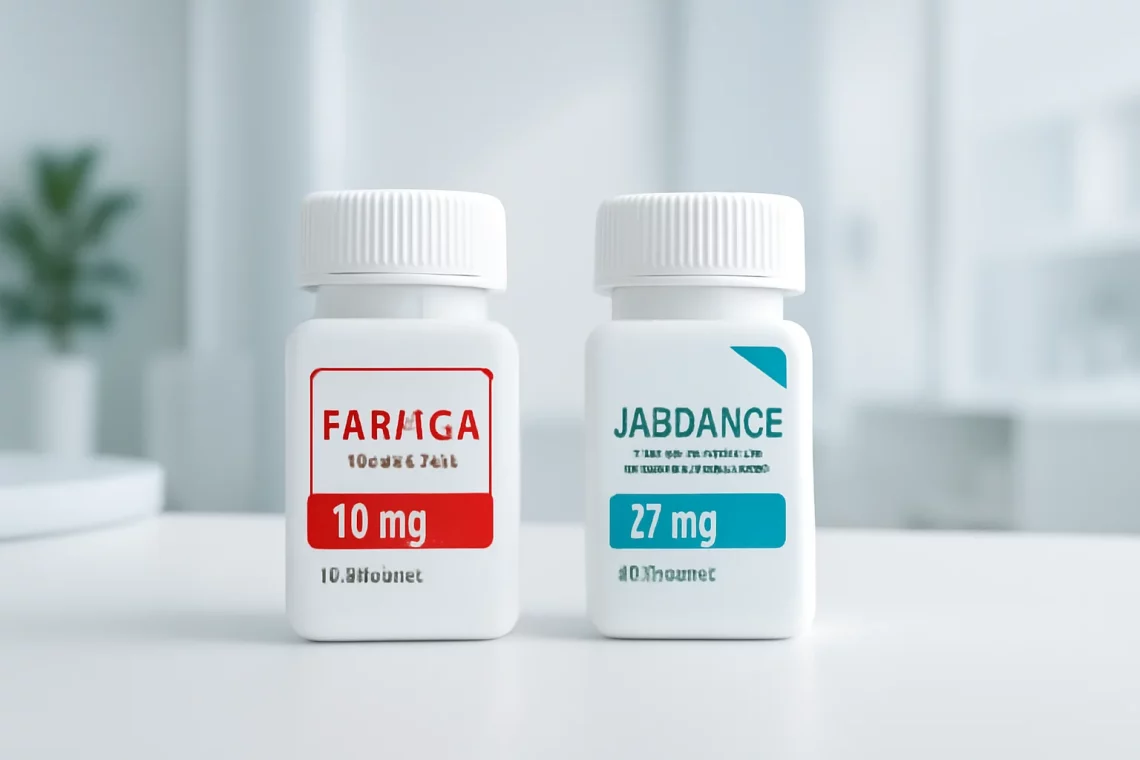
Farxiga vs Jardiance: A Comprehensive Comparison of Diabetes Medications
In recent years, the landscape of diabetes management has evolved significantly, with new medications emerging to help patients control their blood sugar levels more effectively. Two prominent medications in this arena are Farxiga and Jardiance, both of which belong to a class of drugs known as SGLT2 inhibitors. These medications have gained attention for their ability to lower glucose levels and offer additional benefits, such as weight loss and cardiovascular protection. With diabetes being a chronic condition that affects millions of people worldwide, understanding the differences and similarities between these two medications is crucial for patients and healthcare providers alike.
As more individuals seek information on how to manage their diabetes, the conversation around Farxiga and Jardiance becomes increasingly relevant. Patients are often looking for the most effective treatment options that align with their lifestyle and medical needs. The choice between these two medications can be influenced by various factors, including effectiveness, side effects, and individual health conditions. Therefore, diving deeper into the characteristics of Farxiga and Jardiance will empower patients to make informed decisions about their diabetes treatment.
Understanding SGLT2 Inhibitors
SGLT2 inhibitors are a class of medications designed to help manage blood sugar levels in people with type 2 diabetes. They work by preventing the reabsorption of glucose in the kidneys, allowing excess sugar to be excreted through urine. This mechanism not only helps to lower blood sugar levels but also leads to a reduction in overall body weight, which can be beneficial for many patients.
Both Farxiga (dapagliflozin) and Jardiance (empagliflozin) have shown effectiveness in managing diabetes. They are often prescribed when lifestyle changes, such as diet and exercise, are not sufficient to control blood sugar levels. The unique properties of each medication can influence a healthcare provider’s decision in prescribing them, as they may work better for some patients than for others.
In addition to glucose control, SGLT2 inhibitors have been studied for their cardiovascular benefits. Research indicates that these medications can reduce the risk of heart-related events in diabetic patients, an essential aspect considering the high prevalence of cardiovascular disease among individuals with diabetes. Furthermore, they may assist in slowing the progression of kidney disease, providing an added layer of protection for patients who are at risk.
However, like all medications, SGLT2 inhibitors come with potential side effects. Common side effects include urinary tract infections, genital yeast infections, and dehydration due to increased urination. Understanding these side effects is crucial for patients and can influence the choice between Farxiga and Jardiance.
Comparative Effectiveness of Farxiga and Jardiance
When comparing Farxiga and Jardiance, it is essential to consider their effectiveness in managing blood sugar levels. Clinical trials have demonstrated that both medications effectively lower HbA1c levels, a key marker for long-term blood sugar control. However, the degree of effectiveness can vary between individuals based on their unique health profiles.
Farxiga has been noted for its rapid onset of action, often leading to quicker results in lowering blood glucose levels. This can be particularly beneficial for patients who need immediate support in managing their diabetes. On the other hand, Jardiance has shown remarkable efficacy in reducing the risk of cardiovascular events, which is a crucial consideration for patients with a history of heart disease.
Additionally, the weight loss associated with these medications can also differ. Patients taking Farxiga may experience greater weight loss compared to those on Jardiance, making it a suitable option for individuals looking to shed pounds alongside managing their diabetes. However, the decision to choose one medication over the other should not be based solely on weight loss potential; it should consider the patient’s overall health, lifestyle, and specific medical needs.
Moreover, the duration of the effects can vary. While both medications have a similar duration of action, individual responses may differ. Therefore, continuous monitoring and communication with healthcare providers are essential to ensure optimal management of diabetes.
Side Effects and Considerations
While Farxiga and Jardiance offer significant benefits in managing diabetes, they are not without their side effects. Common side effects include urinary tract infections and genital yeast infections, which can be concerning for some patients. These infections may arise from the increased glucose levels in urine, creating a favorable environment for bacteria and yeast.
In addition to these common side effects, both medications carry a risk of dehydration, particularly in patients who may not be drinking enough fluids. This risk is heightened in individuals taking diuretics or those who engage in activities that may lead to excessive fluid loss. Patients should be encouraged to stay well-hydrated while on these medications.
Furthermore, it is essential to be aware of the rare but serious potential side effects, such as ketoacidosis, a condition where the body produces high levels of ketones, leading to acidic blood. This condition can be life-threatening if not addressed promptly. Patients should be educated on the symptoms of ketoacidosis, which include nausea, vomiting, abdominal pain, and difficulty breathing.
Both Farxiga and Jardiance may also affect kidney function, so regular monitoring of kidney health is imperative. Patients with a history of kidney disease or those at risk should discuss their options thoroughly with their healthcare provider before starting either medication.
Finally, it is crucial for patients to be aware of the potential interactions between these medications and other drugs they may be taking. A complete medication review by a healthcare professional can help mitigate any risks associated with drug interactions.
Patient Experience and Lifestyle Factors
The choice between Farxiga and Jardiance often extends beyond the clinical effectiveness and side effects. Patient experience and lifestyle factors play a significant role in determining the best fit for diabetes management.
One of the primary considerations is the dosing schedule. Farxiga is typically taken once daily, which can be convenient for patients looking for simplicity in their medication regimen. Conversely, Jardiance also follows a once-daily dosing, making both medications relatively easy to incorporate into a daily routine.
Another lifestyle factor is dietary habits and physical activity. Patients who actively engage in regular exercise and maintain a balanced diet may find that they respond better to one medication over the other. For instance, those who are more physically active may benefit from the weight loss effects of Farxiga, while those with a history of cardiovascular issues may lean towards Jardiance for its heart-protective benefits.
Additionally, the support systems available to patients can influence their experience with these medications. Access to healthcare providers, diabetes educators, and support groups plays a crucial role in helping patients navigate their treatment options effectively.
Moreover, understanding the potential psychological impact of diabetes management medications is vital. Some patients may experience anxiety about taking new medications due to potential side effects or long-term implications. Open discussions with healthcare providers and support networks can help alleviate these concerns and encourage adherence to prescribed treatment plans.
In conclusion, the decision between Farxiga and Jardiance is multifaceted, involving an understanding of each medication’s effectiveness, side effects, and alignment with patient lifestyles. Both medications have proven their worth in diabetes management, and the right choice will vary among individuals.
**Disclaimer:** This article is for informational purposes only and does not constitute medical advice. Always consult a healthcare professional for medical concerns and before starting any new treatment.




